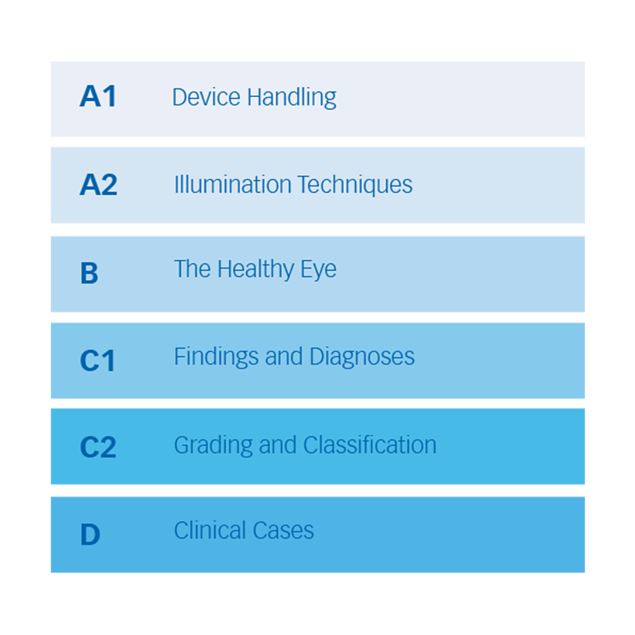By examining healthy eyes of patients of different gender, age, and ethnicity, trainees learn to visualize anatomical features and get familiar with variations of normal eyes. Basic examination training aims at gaining routine in examining patients' eyelids, conjunctiva, and cornea. Visual clues guide trainees through the tasks of the procedure, for example, with green and red marks indicating whether the examination area is in focus. Moreover, trainees can retract the eyelids to examine the upper and lower bulbar conjunctiva.

